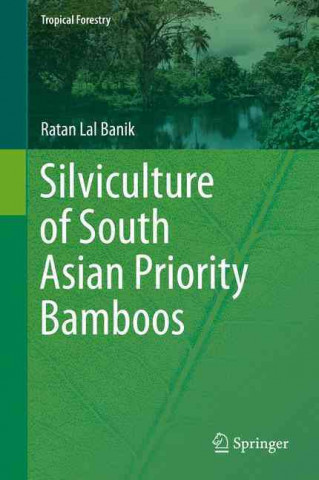
Doručení
Nákupní rádce





Nehodí se? Vůbec nevadí! U nás můžete do 30 dní vrátit
 Dárkový poukaz
V libovolné hodnotě
Dárkový poukaz
V libovolné hodnotě
S dárkovým poukazem nešlápnete vedle. Obdarovaný si za dárkový poukaz může vybrat cokoliv z naší nabídky.
Silviculture of South Asian Priority Bamboos
 Angličtina
Angličtina
 401 b
401 b
30 dní na vrácení zboží


This monograph aims at bringing out a§comprehensive collection of information on bamboo varieties in South Asia. The main focus of this book is to address the§ecological and economic significance of bamboos.§§Bamboo is a versatile group of plants,§capable of providing ecological, economic and livelihood security to the§people. `It is to shelter, to fashion tools, to weave baskets, to help§water obey, to provide beauty and sounds`. In§the tropics, especially the rural areas in different countries of South Asia, most of the houses are made of§bamboos. In the hilly areas of Bangladesh, Bhutan, Nepal and India the tribal§people take bamboo shoots as one of their major food items since prehistoric§days. Certainly, it saved many lives of our forefathers. Thus bamboo has been identified as a symbol of§life and became "the poor man's timber"§to the Indians, "the friend of the people" to the Chinese and it is "the§brother" of the Vietnamese. With high productivity and grass like leaves§bamboo plants have been like by most of the herbivore animals, such as,§elephants, the wild cattle, Indian Bison ( Bos gaurus ), and various species of deer. The red-panda in the§Himalayas, and primates, pigs, rats and mice, porcupines, and squirrels are§also important incidental feeders on southeast Asian bamboos. However, it is§not that all bamboo species are liked by these animals rather they have some§selection about the species. Reforesting and managing forest of these selected§species is also important for sustainability of ecosystem and fauna of the§region§§There has been a growing awareness in recent§years about the values of bamboo being an important means of economic growth§and for improving the socio-economic conditions of the rural poor. Bamboo as§an industrial material can substitute wood and that to at low cost. Due§to increasing demand and squeezing of bamboo area the plants have been§overexploited and the quality and quantity of resource alarmingly getting§depleted. Besides many new bamboo based industries have come up which also§urgently require uninterrupted supply of species wise bamboo resource. The§south Asia region has bestowed with more§than 300 bamboo species with enormous diversities at species, ecological and§genetical level. People from their age§old experiences have selected only some of these bamboo species for their§socio-economic, specific ecologic and modern industrial needs; and started§cultivating them with priority. A number of§such priority bamboo species are found to be common among countries of§the region, indicating their wide range of ability to adjust environmental§conditions of these countries and various utilization potentials. Both government and private planters in the§countries of south Asia have started allocating funds, land and other logistics§to raise large scale plantation of desired §bamboo species. Often they have queries to know the specific local and§modern industrial uses of each bamboo species, how to recognize them at the§field, traditional vernacular and correct scientific name of the bamboo species§for making local and international trade contacts, what are the flowering (seeding) intervals§and seed availability, how to have sufficient number of quality planting§materials (QPM) and details of planting and management techniques. In many§occasions it has not been able to answer these queries to the satisfaction of§the clients due to the lack of information. This book has been drafted to find§out answers of these queries mostly based on my field observations on each of§the bamboo species and knowledge learnt from the indigenous people living with§bamboos in different parts of south-east and south Asian countries. During last 45 years of my association with bamboo§plant I had the opportunity to observe flowering, seeding and seedling of more§than 30 bamboo species and the relevant informatio
Informace o knize
 Angličtina
Angličtina




 Jak nakupovat
Jak nakupovat















